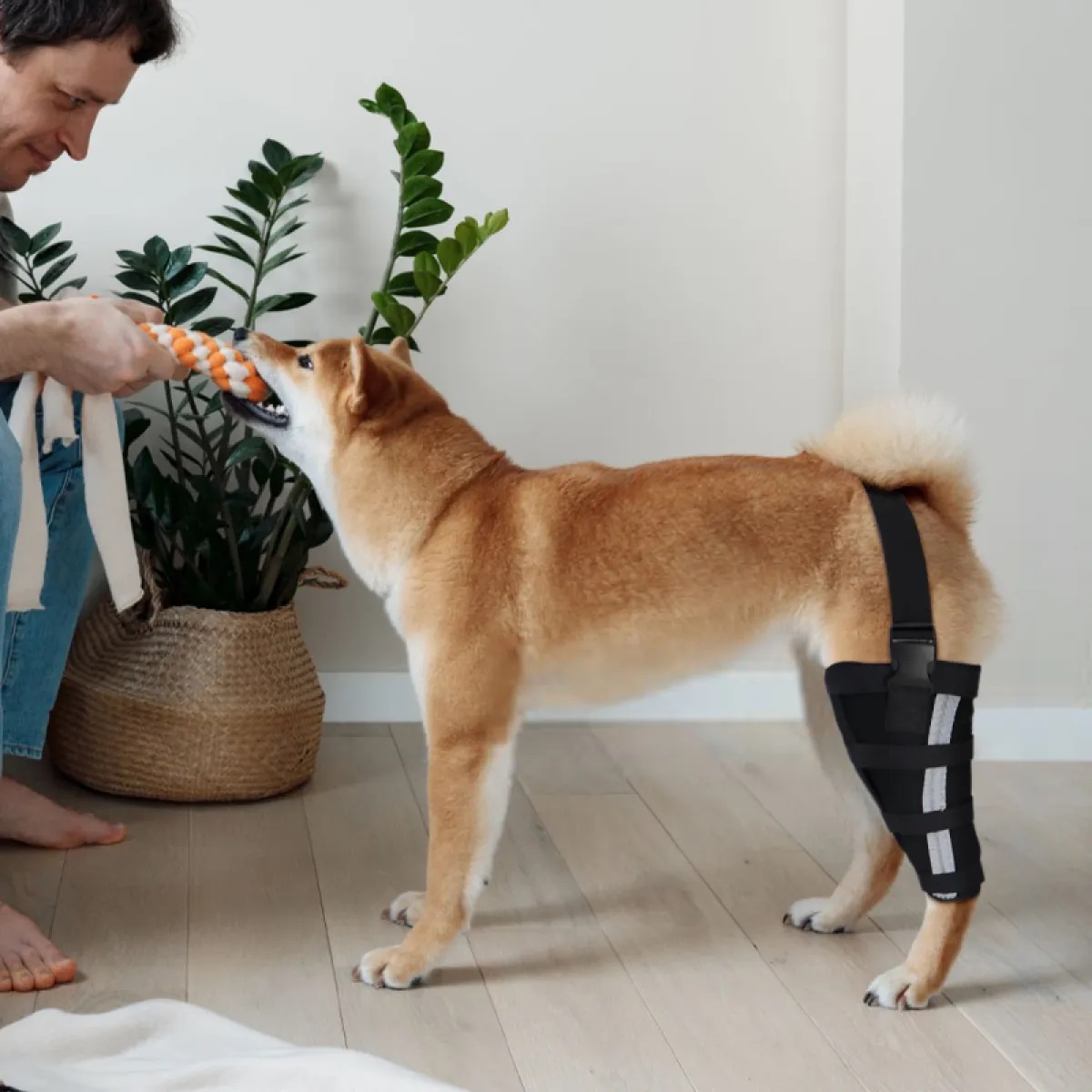If your dog has been diagnosed with an ACL injury, you may be searching for effective ways to support their recovery without resorting to surgery. While veterinary advice is crucial, there are several strategies and products that can help your dog heal and regain mobility. One highly recommended option is a dog knee brace, which can provide essential support during the healing process.
Understanding ACL Injuries in Dogs
The anterior cruciate ligament (ACL) is vital for maintaining stability in your dog's knee. Injuries to this ligament can occur due to various factors, including age, activity level, and breed predisposition. Symptoms of an ACL injury may include limping, difficulty jumping, and swelling around the knee. If you suspect your dog has an ACL injury, consult your veterinarian for a proper diagnosis and treatment plan.
Benefits of Using a Dog Knee Brace
A knee brace for dogs with ACL injuries can offer several benefits:
Stability and Support: A dog knee brace helps stabilize the knee joint, reducing stress on the injured ligament. This support can alleviate pain and prevent further injury during recovery.
Pain Relief: By limiting excessive movement, a knee brace can help reduce inflammation and pain associated with ACL injuries, allowing your dog to move more comfortably.
Improved Mobility: With the right support, dogs can regain confidence in their movements, making it easier for them to walk, run, and play.
Non-Invasive Option: Using a dog knee brace for torn ACL injuries is a non-invasive alternative to surgical options, making it a popular choice for many pet owners.
Choosing the Right Dog Knee Brace
When selecting a knee brace for your dog, consider the following factors:
Size and Fit: Ensure the brace fits snugly without being too tight. A proper fit is crucial for effective support and comfort.
Material: Look for braces made from breathable, lightweight materials that allow for flexibility while providing adequate support.
Design: Some braces come with adjustable straps or Velcro for a customizable fit, while others may feature additional padding or reinforced areas for extra stability.
Additional Steps to Support Recovery
In addition to using a dog knee brace, consider incorporating these strategies to promote healing:
Rest: Limit your dog’s activity to prevent further strain on the injured leg. Short, controlled walks are often better than free play during recovery.
Weight Management: Keeping your dog at a healthy weight can reduce stress on their joints, aiding in the healing process.
Physical Therapy: Consult with your veterinarian about physical therapy options that can help improve mobility and strength.
Diet and Supplements: Providing a balanced diet rich in nutrients and considering supplements like glucosamine may support joint health.
Conclusion
While surgery is sometimes necessary for severe ACL injuries, many dogs can heal successfully with the right support and care. A dog knee brace is an effective tool for helping your pet recover without surgical intervention. By combining the use of a knee brace with rest, weight management, and possibly physical therapy, you can help your dog return to their active, playful self. Always consult your veterinarian for personalized advice and to monitor your dog’s progress.


0 Comments